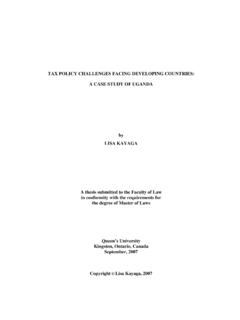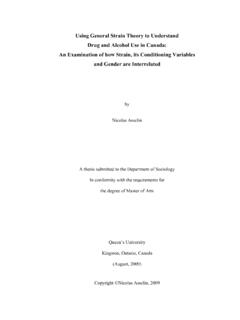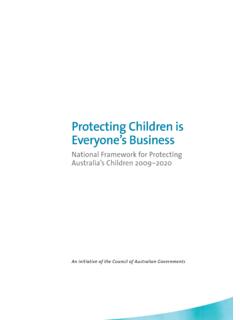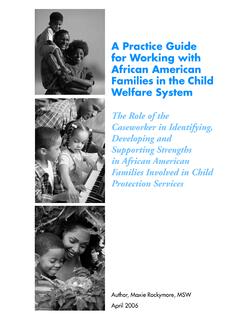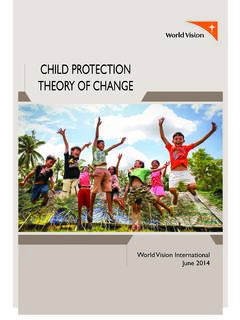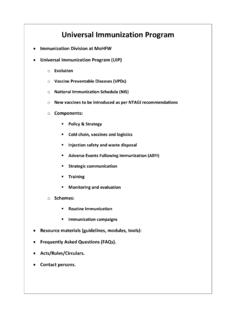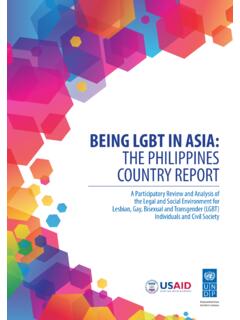Transcription of Intergenerational Trauma from a Mental Health Perspective
1 Native Social Work Journal Vol 7, pp. 63-85 Intergenerational Trauma from a Mental Health Perspective Peter Menzies, PhD, RSWC linical Head, Aboriginal ServicesCentre for Addiction and Mental HealthToronto, ONAbstract Over the past few decades, Intergenerational Trauma as an explanation for the array of social conditions that exist within Aboriginal communities has been put forward by a number of researchers (Braveheart-Jordon & De Bruyn, 1995; Hodgson, 1990; Kirmayer, Brass, & Tait, 2000; Phillips, 1999; Waldram, 1997).
2 Through in-depth interviews, this study explored the men s personal and family histories, seeking links between personal homelessness and Intergenerational Trauma . An interpretation of the data from these interviews and from a focus group with other homeless Aboriginal men isolated the indicators of Intergenerational Trauma within four domains: individual, family, community, and nation. The indicators of Intergenerational Trauma within these domains are synthesized in the Intergenerational Trauma Model.
3 This model is predicated on the assumption that public policies have disrupted relations among the four domains and the resulting Trauma has incubated negative social conditions for Aboriginal people, making them significantly more vulnerable to a number of threatening social conditions. Subsequent refinements to the model provide the Mental Health professional with a generic lens to examine the relationship between Intergenerational Trauma and social systems that Aboriginal peoples come in contact Kinoomaadwin NaadmaadwinPeter MenziesReflectionsOver the last fifty years, there has been an abundance of research on how Aboriginal people experience an array of Mental Health issues.
4 De-spite this plethora of research into Mental Health conditions, it has been difficult to locate research to explain why a disproportionate number of Aboriginals experience Mental Health challenges compared to the general population. In my practice as a Mental Health therapist, I was able to help community members explore their personal histories as a way of begin-ning their healing journeys. I began to recognize that many of the Mental Health conditions Aboriginal people are suffering from are a direct result of the relationship Aboriginal people have had historically to the Cana-dian government.
5 Those of us who have been impacted by the vagaries of Aboriginal public policy can provide first hand evidence on the negative consequences that public policies have had not only on our lives but that of our families, community and I am a member of the Sagamok Anishnawbek First Nation, and my childhood was not out of the ordinary for many Aboriginal children im-pacted by government public policies. From birth, I was placed in the care of the Sisters of St. Joseph s, and with the closing of the institution, I was discharged to the care of the children s Aid Society.
6 As an ado-lescent, I wrested with my feelings of anger, confusion, abandonment, and my Indianness . I was called many derogatory names that made me feel ashamed of my cultural heritage. Through this struggle, I managed to complete high school and post-secondary education, graduating from the University of Manitoba, School of Social Work. The impact of pub-lic policy has left a legacy of Trauma within individuals, their families, communities, and across nations. My own disconnection from my birth family, extended family, community and culture has made me sensitive to the needs of our people who are also separated from themselves, fami-lies, community and nation.
7 As a Mental Health worker in the Aboriginal community, I recognize the need to ground our work in the experience of the individual, but also in the extended family and the community from which our ancestors existed. 65 Native Social Work Journal Intergenerational Trauma from a Mental Health Perspective It was during my PhD studies, I came across the concept of Intergen-erational Historical Trauma . After listening to Dr. Maria Yellow Horse Brave Heart s presentation, whose work in Aboriginal communities in the United States is grounded in this theory, I began to re-examine my own life and that of the people who I work with within the context of this model.
8 This paper begins with an historic overview of Canada s social poli-cies that have impacted Aboriginal people and how they have contributed to our disconnection from our families, our communities and from one another. The issue of Trauma , specifically Intergenerational Trauma is ex-plored in great detail as a contributor to the explanation of the dispropor-tionate representation of Mental Health issues among Aboriginal people. Finally, from my clinical experience I believe that many of the indicators of the Intergenerational Trauma Model developed can be applied across many social realities that Aboriginal peoples are enduring, recognizing that there will be other indicators if women and children were included in the study.
9 Public Policy and Canada s Aboriginal PeoplesCanadian social policy has been instrumental in creating institutions that have attempted to eradicate Aboriginal worldview and value systems that existed for thousands of years (Churchill, 1995), replacing them with doctrines that continue to disrupt life for Aboriginal peoples. The Indian Act of 1876 established the federal government as the guardian of Aboriginal peoples. Artificial settlements were created, segregating individuals into groups that were defined by authorities out-side of existing community networks.
10 It set up authority within these ar-tificial settlements and created hierarchy and decision-making authorities that did not reflect traditional values and practices. In effect, the Indian Act was an act of Parliament that gave authority to non-Aboriginals to control the everyday life of Aboriginal peoples across Canada (Royal Commission on Aboriginal Peoples, 1996, Vol. 3). The Canadian government has used other mechanisms, including reli-gious institutions, to transform Aboriginal communities. Between 1840 66 Nishnaabe Kinoomaadwin NaadmaadwinPeter Menziesand 1983, it is estimated that over 100,000 Aboriginal children were placed in the residential school system (United Church of Canada, 1994) for the purpose of assimilation, segregation, and integration into main-stream Canadian society.
